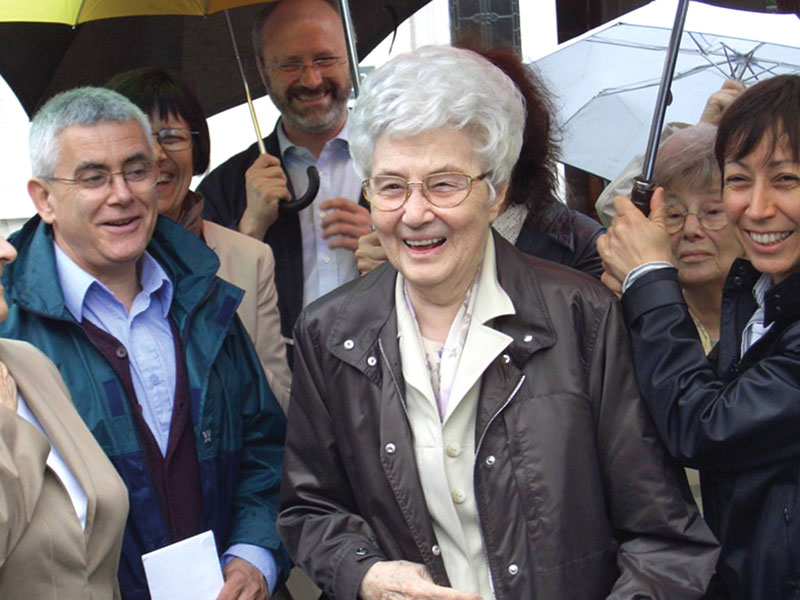
1965-1971: NOT TWO MOVEMENTS BUT ONE
The story of the Focolare Movement in Great Britain began over forty years ago when the fledgling Focolare community arrived in Liverpool in November 1963. Contacts had also begun with members of the Anglican Church in Rome during the Second Vatican Council, notably with Canon Bernard Pawley, who attended the Council as an observer. In fact, the invitation extended to Chiara to speak in Liverpool’s Anglican Cathedral was in response to the request made by a handful of Anglican clergy who saw in the charism of unity a new way forward for ecumenism. The presence of the Focolare in Britain today and the number of visits Chiara made to these shores, owes much to the vision of that first group of Anglicans. We have a great deal to thank them for.
The story of Chiara’s first meeting with an Archbishop of Canterbury, Michael Ramsey, is well known among Focolare members. On hearing Chiara tell the story of the Movement’s origins, the Archbishop recognised that this was a work of God which could provide a bridge between the Roman Catholic and Anglican Churches. His comment, ‘Here there is the finger of God’, recalled the approval given by another great man who was instrumental in encouraging the Movement to go ahead in the 1940s, the Roman Catholic Archbishop of Trent, Mgr Carlo de Ferrari. Less well known is the fact that when Chiara went to visit Archbishop Ramsey in July 1966, she also met his predecessor, Geoffrey Fisher, in the library of Lambeth Palace. Although the meeting was informal, it was not without substance, for on that occasion Dr Fisher wanted to show Chiara the exact spot where he had the intuition that he should go to Rome to meet with Pope Paul VI, the first Archbishop of Canterbury to do so since the Reformation.
The ecumenical work of the Movement in this country took place in a very different ecclesial context than the one we live in at present. The idea of Catholics and Anglicans trying to live the Gospel together was very new. At one point, the question was asked, if the Movement in England should be divided, becoming the Anglican Focolare Movement and the Catholic Focolare Movement? Chiara came to London in 1971 to meet with a small group of Anglican clergy and laity to discern the way forward with them. Together they reached the decision: the movement of unity must always remain one. At a distance of thirty-seven years, archived material from that meeting still conveys the freshness and commitment of those early days.
Over a forty-year period, Chiara’s visits have always included meetings with the Archbishops of Canterbury. These meetings have always been a great encouragement to the members of the Movement, and to Chiara herself. Chiara was always welcomed warmly and encouraged to go ahead bringing the spirit of the charism of unity into the Anglican Communion. When Chiara told Archbishop Rowan Williams that she had met with five successive Archbishops of Canterbury, he remarked wryly: ‘You know more about the Church of England than me!’
LONDON 1977: LIGHT ON THE LAMPSTAND
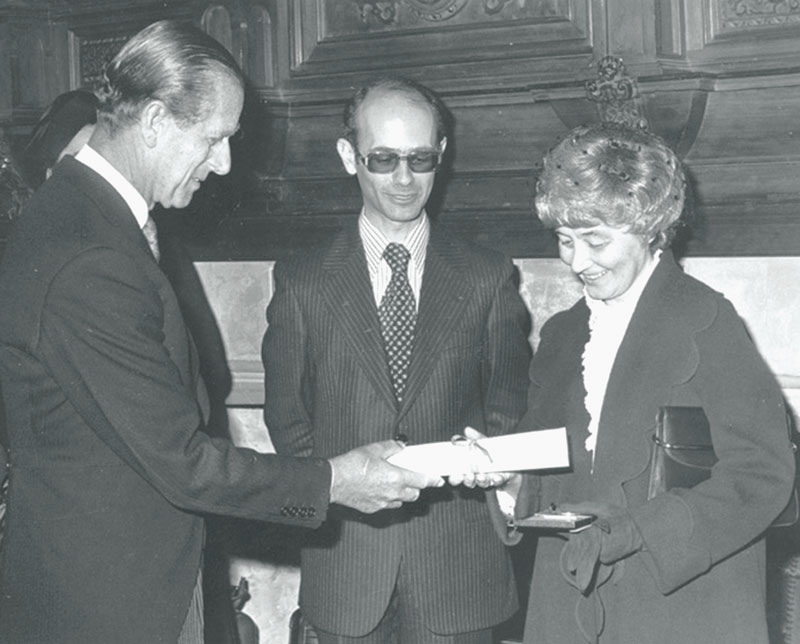
In 1977 the international jury of the Templeton Foundation awarded its annual prize for Progress in Religion to Chiara Lubich ‘for helping people of many denominations to grow spiritually by emphasising “love one another as I have loved you”.’ Choosing Chiara as the recipient of the 1977 award, the Foundation acknowledged her work in the Catholic Church and ecumenically, describing her contribution to promoting unity among Christians as one of the outstanding achievements in inter-church and interfaith relations today.
News of receiving this prestigious award came as a surprise to Chiara, who wondered whether a prize for religion was not somehow in contrast with the life of the Gospel. Her desire was to remain that young girl who gave her life to God, focusing on the life within, unrecognised, unrewarded. Yet she was also conscious of the God-given gift of the charism of unity. The words of the Gospel provided the answer: ‘… no-one lights a lamp to place it under a bushel but on the lamp stand for all to see.’ (Mt.5: 14) If the publicity the award would give rise to gave glory to God, then she could rejoice in it.
The Templeton Prize certainly put the light on the lamp stand. Linked to it was the first biography of Chiara, commissioned by the Templeton Foundation. From this the lengthy friendship between Chiara and her Baptist biographer, Edwin Robertson, began. This first public recognition of the Movement was covered in the secular and religious press in the UK, in Europe and in the US, and was the reason for the film made of the events, ‘Templeton 1977’.
Always attentive to the promptings of the Spirit revealed through events taking place, Chiara recognised that through the Templeton Prize, there were seeds of a new departure. Commenting on the fact that following her address to eight hundred people in London’s historic Guildhall, the first people to come to speak to her were Buddhists, Jews and Sikhs, she understood the role the Movement might play in the future with members of the other religions.
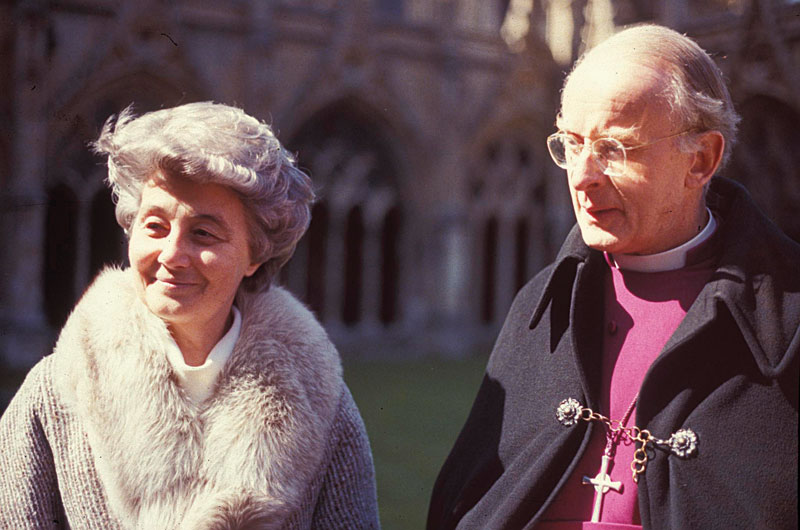
Before leaving London, Chiara wrote to all the members of the Movement in Britain and Ireland reflecting on the experience of ‘London 1977’. She described it as ‘a new step for us all, to launch out with increased commitment to live our great Ideal’… ‘Let’s go ahead,’ she said, ‘united with Jesus among us. Let’s go forward, carrying one another’s burdens, living the present moment with perfection and with solemnity, tending towards sanctity’. Chiara concluded her message asking, ‘that God gives us the grace, in the time that remains to us, to give the greatest glory to God’.
This challenge was taken up, and on Chiara’s next visit to London in June 1981 she commented on the growth of the Movement in Britain. ‘The baby is born and now it needs a cradle,’ she said. This was the idea which led to the opening of the Focolare Centre for Unity in Welwyn Garden City.
NOVEMBER 1996: AN ECUMENISM OF THE PEOPLE
Chiara’s visit to England in 1996 was the catalyst for a new understanding of the direction the Movement should take ecumenically. Ecumenical dialogue can take different forms: the ecumenism of love, which we see exemplified in the courteous exchange of visits and gifts between Church leaders. The dialogue of prayer, when Christians come together to pray for unity, especially in Christian Unity week; or theological dialogue, which has given rise to study groups, joint working parties and declarations of common understanding. All these forms of ecumenism are important: they are signposts pointing to the way ahead. Yet no-one of these dialogues alone is sufficient. Ecumenism, which appeared to be going through a fallow time in 1996, needed to find a new way forward, a way which involved everyone. Speaking to a group of ecumenists in York, Chiara urged those present to focus on what unites, rather than what divides, and to work with renewed commitment to bring forward the cause of Christian unity.
On 16 November 1996 Chiara met with the Focolare communities of Great Britain and Ireland, in the Logan Hall, London and shared with them the importance of having a fourth ecumenical dialogue: ‘the dialogue of life’. She said: ‘This visit of mine to Great Britain made me realise that we have a fourth dialogue, a fourth way of doing ecumenism. Ours is a ‘dialogue of life’, of a people which is Catholic, Anglican, Lutheran and Reformed; of a people that is already united. It is the Christian people of the year 2000. Our ecumenism consists of awakening in people their Christian instinct, which binds us together… We are this Christian people. The other day I was speaking to the Focolarini: Lesley and Callan were present, and I said: “Who could separate me from Lesley and Callan? No-one! Because Christ has united us, Jesus in our midst has united us, therefore, no one will be able to separate us. … The fact that Christ has united us, he has made us into a single people.”’
JUNE 2004: A NEW OPENING IN PUBLIC LIFE
In June 2004 Chiara came to England for the eighth and final time, following an invitation from the Dean of the Faculty of Theology, Philosophy and History, Fr Michael Hayes, to speak in St. Mary’s College, Strawberry Hill. For the Movement, it was a return to Strawberry Hill after nearly forty years, for the Focolare’s first public activity in England, the Mariapolis, was held here in 1966.
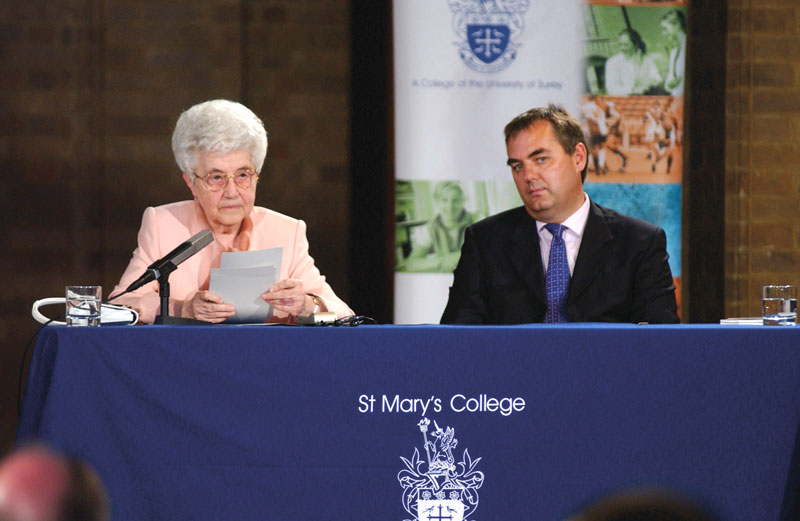
The lecture, which concluded the series on the charisms in the Church today by key figures from ecclesial movements was on mission and evangelisation. Speaking of the ecclesial movements and the Marian profile of the Church, Chiara began with the new vision of the Church described by Pope John Paul II during the large-scale meeting of Pentecost 1998 in St. Peter’s Square, a theme she developed in great depth. In a direct and accessible way Chiara spoke of the sufferings and pursuits of humanity today, indicating the way that Mary proposes to men and women, young people and adults, priests, religious and bishops, so they might model themselves on Mary, in a certain way, ‘relive her’ in order to make her present – as much as this is possible – on earth. A very lively dialogue followed. At the conclusion of the evening, a Muslim involved in dialogue with Christians commented: ‘For me a new way has been opened.’ This comment proved to be quite prophetic in that the new way the Holy Spirit was directing the Movement would unfold gradually over the next ten days.
What future for a multicultural, multi-ethnic and multireligious society?
One of the first impressions one has on arrival in London is the vastness of this capital city of over twelve million inhabitants and its cosmopolitan character. Appropriately, the public meeting organized by the Focolare to coincide with Chiara’s visit had as its theme: ‘Imagine a world… enriched by diversity’.
Chiara arrived in Central Hall amidst a blaze of beautiful colours and African rhythms, surrounded by representatives of the Bangwa people, led by the Fon of Fonjumetaw, in Cameroon. Those gathered in the hall, who up to that point had been warm but reserved, rose to their feet in a joyful expression of appreciation of diversity at its best. In introducing her, Baroness Shirley Williams recalled Chiara’s vision when, twenty seven years previously, on the occasion of the Templeton Prize, she said she was confident that the Catholic, Anglican, Jewish, Sikh and Muslim leaders present would be happy to work together to make London a place of profound multi-religious and multi-cultural mutual respect.
Addressing the question: ‘What future for a multicultural, multi-ethnic and multireligious society?’ Chiara did not ignore the widespread fears of increasing terrorism, of wars in the Middle East and in many parts of the world. She said: ‘Many people see signs of a possible clash of civilizations. They say that it is marked and even intensified by the different religious affiliations.’ But she described this way of seeing things, triggered by extremists and fanaticism which distort the religions, as being ‘very partial’. Chiara opened another perspective: that dialogue among religions can be a remedy to terrorism and from this dialogue ‘a strategy of fraternity can start, a strategy capable of determining a turning point in international relationships.’ The vision that the third millennium will be the millennium of the fraternity of the human family enriched by the diversities, according to God’s design, was shared by the leaders of the various religions who immediately expressed their agreement.
Liberty, equality… what ever happened to fraternity?
On Tuesday, June 22nd, Chiara was welcomed to the Palace of Westminster, by the Speaker of the House of Commons, Rt. Hon. Michael Martin, MP. Following this warm and friendly meeting, Chiara addressed an audience which included twenty-three members of the House of Commons and four members of the House of Lords. In her address: ‘Liberty, equality… what ever happened to fraternity?’, Chiara observed that liberty and equality have become juridical principles which are applied every day as real and true political categories but asked that the same recognition be given to fraternity. Only together can they give origin to a politics capable of meeting the most demanding challenges of today’s world: political, economic, respect for the human person and the environment, integration of races, ethnic groups and peoples. At the end of the meeting many described Chiara’s words as a ‘source of inspiration’, ‘a new beginning’, ‘a great hope’.
Bridging London
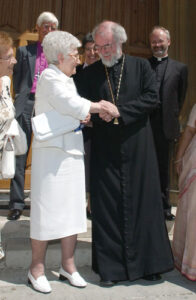
During Chiara’s final visit to the United Kingdom in 2004, she was engaged in meetings covering the main dialogues Focolare is engaged in. She met with members of the ecclesial movements, privately and during the lecture at Strawberry Hill; with Church leaders, notably the Archbishop of Canterbury, Dr. Rowan Williams, the Archbishop of Westminster, Cardinal Cormac Murphy-O’Connor, Archbishop Mario Conti from Glasgow and the Apostolic Nuncio, Archbishop Pable Puente; with members of other faiths and with people of good will. As well as the meeting at Central Hall, Westminster, which had a strongly interfaith, intercultural dimension, Chiara also had a series of private meetings with spiritual leaders from other faith communities.
Her visit marked a new stage in the public life of the Movement in the Britain. It opened up new vistas in the understanding of the way the Holy Spirit was leading the Movement. The idea of a project to take forward the work already begun was announced to the members of the Movement gathered together in the Centre for Unity, Welwyn Garden City on 20 June. The imaginative new project called ‘Bridging London’ would have as its aim to seek to further dialogue at every level, between individuals and communities.
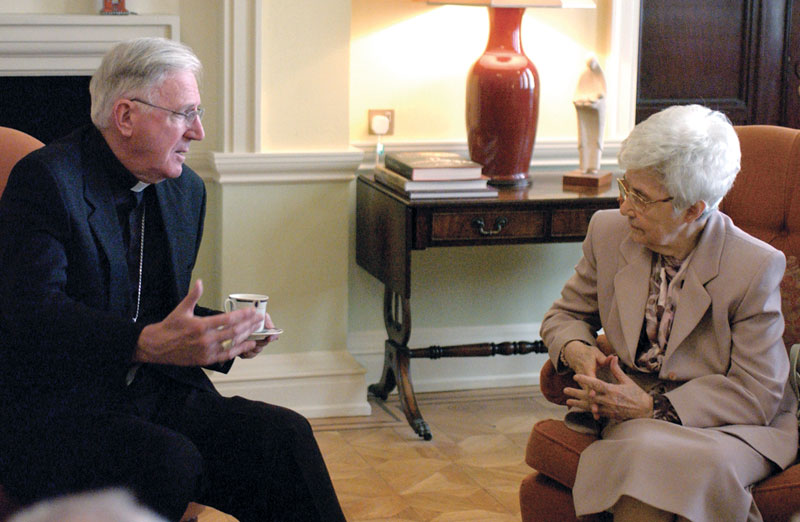
What future for a multicultural, multi-ethnic and multireligious society? During her visit in 2004 Chiara repeated this title several times, making it a statement rather than a question: ‘what a future our multicultural, multiethnic, multifaith society has!’ What a future indeed. In 1977 during her visit to London for the Templeton Prize, Chiara remarked that London, considered by many to be the most cynical city in the world should, through our mutual love, should become the most spiritual city. ‘Bridging London’ has begun. There is a long way to go to make London the most spiritual city in the world, but the prophetic vision of June 2004 lives on. It is up to us now to make it reality. Thank you, Chiara.
[New City Magazine – May 2008, page 6-11]

